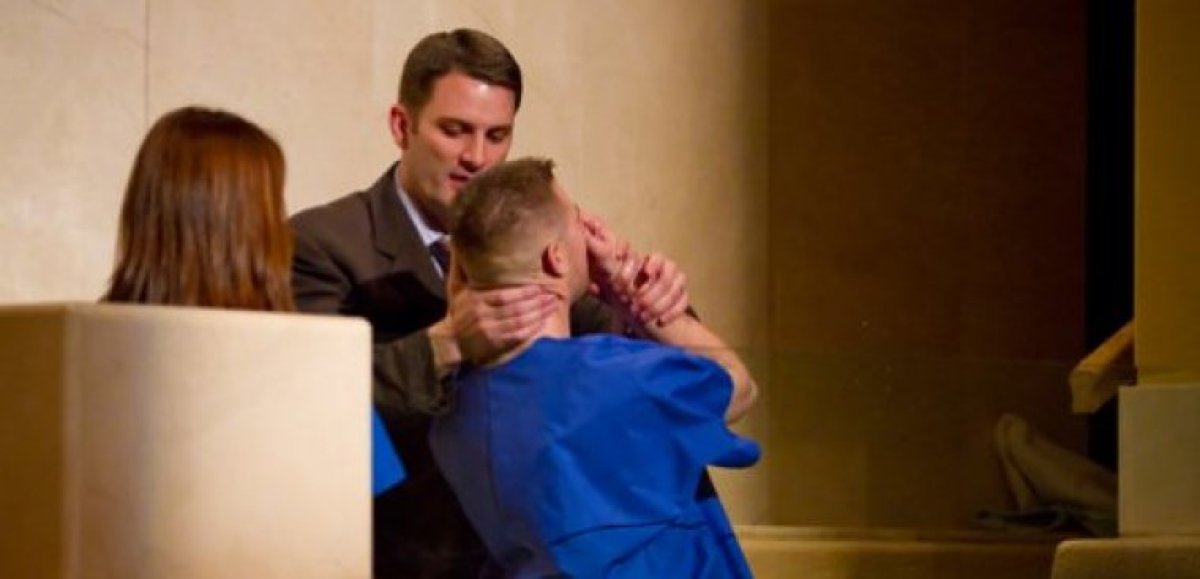Being a member of a growing Baptist church is exciting. The baptistry ministry is an area where volunteers help new Christians publicly show their profession of faith in Jesus Christ. It is a great way to see the fruit of the church’s soulwinning efforts. After salvation, a new Christian’s next step of biblical obedience to God is to make a public statement of their belief through baptism. There are seven steps in having an effective baptistry process.
Step 1: It is imperative that all counselors (church staff, deacons, and members of the church) know how to handle a new convert. Baptism is not salvation. It is vitally important that everyone who brings a person to the baptistry ensures that the person knows the distinction between salvation and baptism. This is crucial. Your first order of business is to ascertain the convert’s knowledge of the fact that baptism is not salvation, and that asking Christ to be their Saviour is. Questions could include: “Why do you want to be baptized today?” “How were you saved?”
Be sure that the convert (young and old alike) knows that baptism is a step of biblical obedience after salvation and not part of the salvation process. Personally, I have turned away people from being baptized for this very reason. Even if there is family from out of town who are there to see a child baptized, if he is not sure what it means, you must stop at that point to get the matter straight. As a counselor, you are a vital gate for converts to go through in order to be baptized.
Step 2: When the counselor brings the person into the baptistry area, the baptistry ministry member gives the person a baptistry robe. In the case of our church, it is a blue robe with a zipper in the front. Due to time constraints, kindly but firmly take the person to a changing booth and encourage him to change quickly. Inform the person to take off all clothing he or she does not want to get wet (which means all clothing unless something has been brought to change into). Let the person know the zipper goes in the front (depending on the type of baptistry robe used, this instruction may be different). Constantly encourage them to change quickly.
Step 3: While the person is changing, get a name tag (in our case, these are ink jet labels bought from an office supply store). Using a marker with a thick tip, write down the person’s first and last name as big as the label allows.
Step 4: When the person has finished changing, place the label on their chest right below their left collar bone. This allows the one baptizing to see the name easily.
Step 5: Quickly explain what is going to happen next. In our church, we explain that they will step down into the baptistry water and the pastor is going to ask them if he/she has accepted Christ as their personal Saviour. Do not tell them what to say; instead ask them what their answer will be. For example, one could state the following: “Johnny, you will be going down into the water—don’t worry, it’s warm water. You will stand in front of the pastor facing me. The pastor will ask you if you have accepted Christ as your personal Saviour. What are you going to say?” This is important as it allows the counselor to know if the convert understands what is happening.
Explain that after answering the pastor, the convert should take a breath and slightly bend their knees while holding his/her nose. Explain that the pastor will place a hand on the back of the neck and hold his arm while leaning him back into the water. Then the pastor will lift him back up out of the water, and he can step up out of the baptistry.
Step 6: After being baptized, the convert is given a towel and directed back into the changing room where he or she can change. Once the person has changed, have the him hang up the baptistry robe on a provided hanger and leave the towel on the floor.
Step 7: End the time with the convert in prayer and congratulations in this important milestone in their Christian faith.



